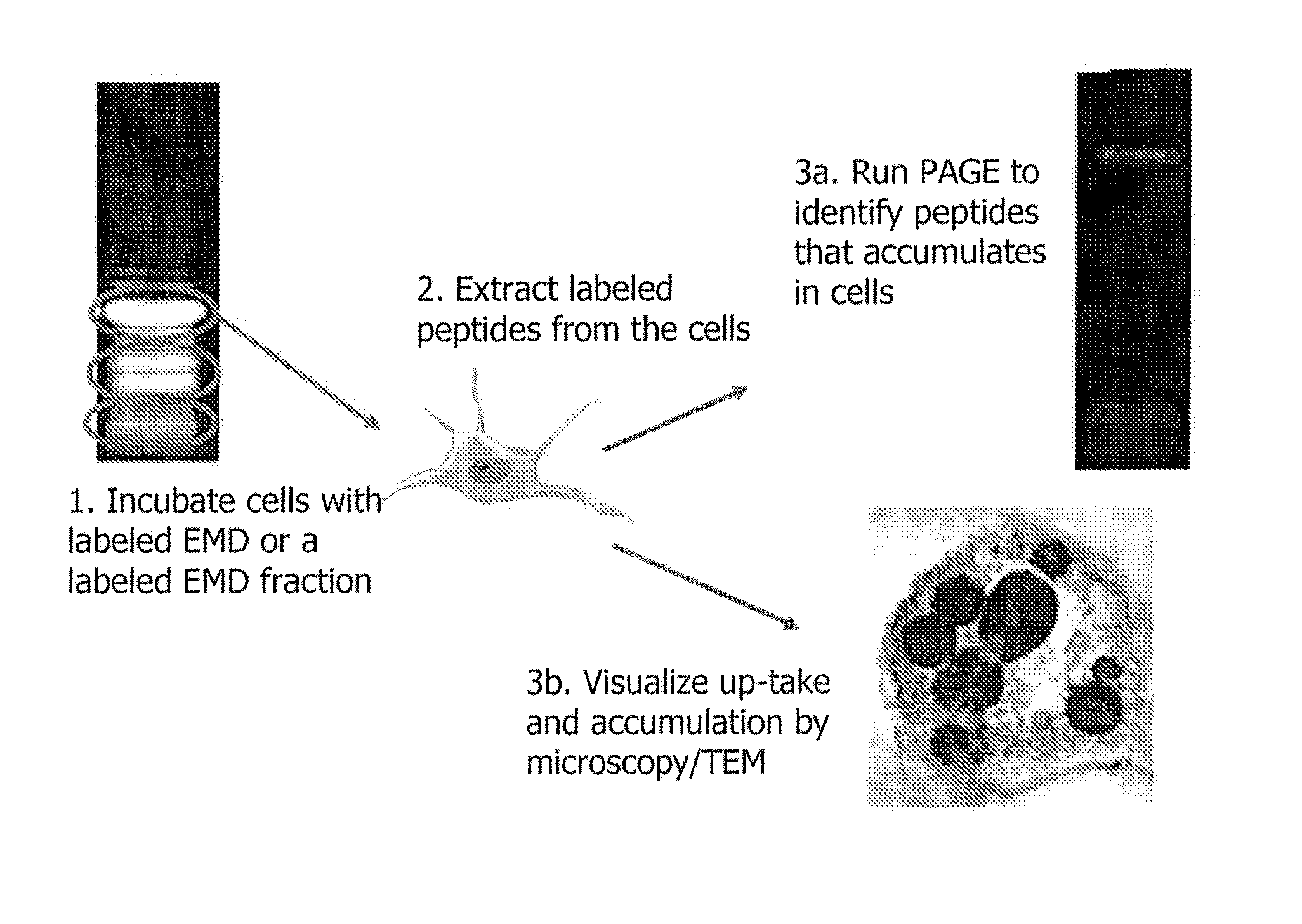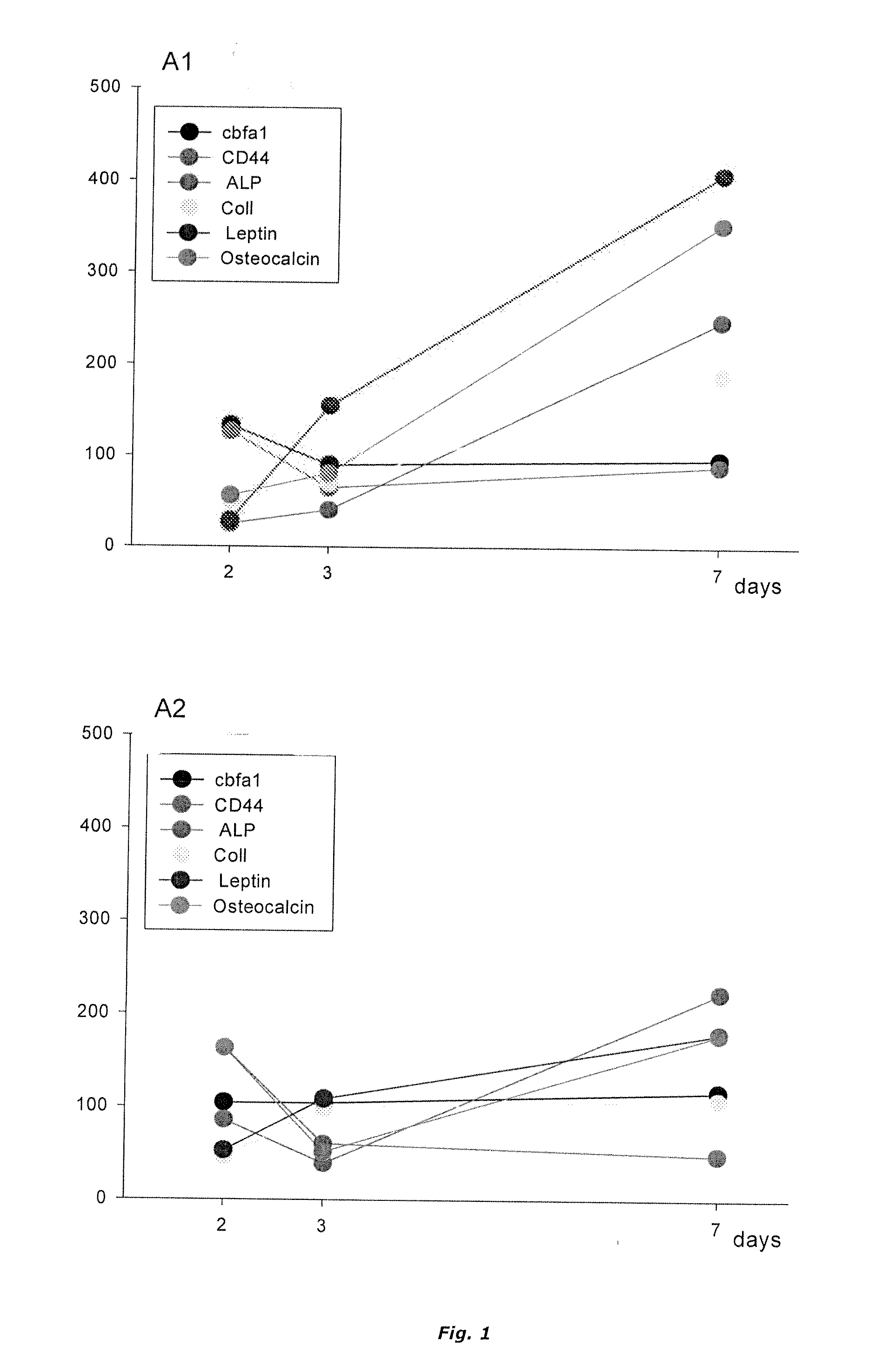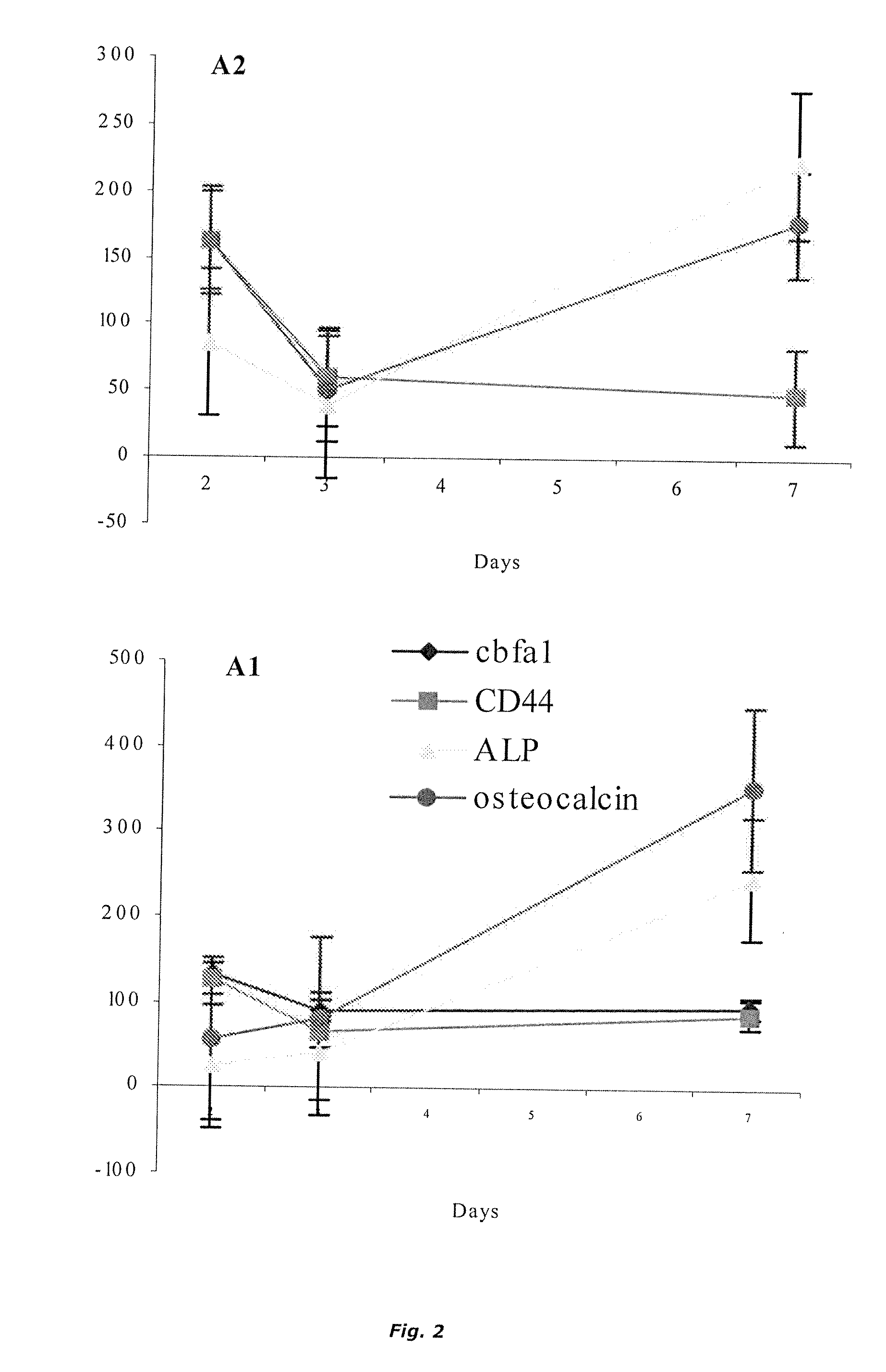Enamel matrix derivative fraction c
a technology of enamel matrix and derivative fraction, which is applied in the field of isolated active compounds, can solve the problems of significant differences in the number and character of enamel matrix amelogenin isoforms, and difficulty in assigning functions to individual amelogenins, and achieves the effects of increasing the attachment rate, facilitating rapid attachment of enamel matrix cells, and increasing growth rate and metabolism
- Summary
- Abstract
- Description
- Claims
- Application Information
AI Technical Summary
Benefits of technology
Problems solved by technology
Method used
Image
Examples
Embodiment Construction
Experimental Section
Methods
[0168]Separation of Fractions from EMD.
[0169]The separation and purification of the different fractions from complete EMD has been performed in serial HPLC column processes:[0170]1) Size exclusion HPLC (TKSSW 2,000-600×30) in Acetonitrile (ACN) / 0.9% NaCl[0171]2) Reverse phase HPLC (YMC-C8, 250×20 mm), in a linear gradient of 30% ACN / 0.9% NaCl to 60% CAN / 0.9% NaCl,
[0172]After this step, with a reverse phase HPLC column (like in step 1)), the components A (including the two distinct components A1 and A2, both of which are >20 kD and recognized by anti-amelogenin antibodies (conventional antibodies against EMD, BIORA AB, SE), B, B1, B2, B3, FRACTION C, C3, C4, D, D2 were showing as distinct peaks and could be separated by fractionating.[0173]2)a To separate 4 distinct subfractions (Cp1, Cp2, Cp3, Cp4) from the FRACTION C fraction, a reverse phase HPLC column was used (ACE-C4 with a linear ACN-acidic gradient) (Advanced Chromatography Technology, USA)[0174]3) ...
PUM
| Property | Measurement | Unit |
|---|---|---|
| molecular weights | aaaaa | aaaaa |
| molecular weight | aaaaa | aaaaa |
| molecular weight | aaaaa | aaaaa |
Abstract
Description
Claims
Application Information
 Login to View More
Login to View More - R&D
- Intellectual Property
- Life Sciences
- Materials
- Tech Scout
- Unparalleled Data Quality
- Higher Quality Content
- 60% Fewer Hallucinations
Browse by: Latest US Patents, China's latest patents, Technical Efficacy Thesaurus, Application Domain, Technology Topic, Popular Technical Reports.
© 2025 PatSnap. All rights reserved.Legal|Privacy policy|Modern Slavery Act Transparency Statement|Sitemap|About US| Contact US: help@patsnap.com



